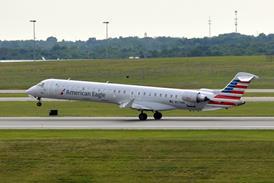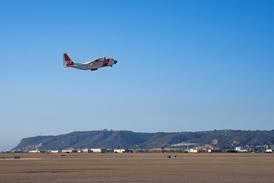Investigators probing a Swiss Airbus A220 low-thrust incident during departure at Porto found that the pilots only belatedly realised that the autothrottle had not engaged before the take-off roll.
Swiss investigation authority SUST found the A220-300, bound for Geneva, had conducted a de-rated rolling take-off from intersection C of runway 35, with its autothrottle armed.
But when the captain advanced the thrust levers, he only pushed them to a lever angle of 20.6°, less than the 23° required to engage the autothrottle.
The pilots were distracted by an unexpected discontinuity in the flightplan after entering the standard departure route into the flight-management system, and the captain asked the first officer to keep a close watch on the system during the take-off roll.
SUST says this meant the first officer had greater difficulty paying the required attention to the monitoring of take-off procedures.
“In this important phase of the flight, this prioritisation was inappropriate,” it states.
As the aircraft accelerated to 60kt the spoilers extended, as designed, but this was not indicated to the crew.
Neither pilot could remember whether they had carried out the 80kt speed and engine thrust check, it adds: “This cannot be explained by anything other than that the check – if it took place – was not performed with the required level of attention.”
Only once the aircraft had reached 90-100kt did the captain realise that the thrust setting was too low, and he advanced the thrust levers to 28.5° – passing the 23° threshold and causing the spoilers to retract. The aircraft issued a configuration warning for the spoilers, noted and checked by the first officer.
While the captain briefly considered aborting the take-off, he instead opted to proceed and the A220 lifted off about 1,000m from the end of the runway. SUST says it had travelled 50% more than the calculated take-off distance.
SUST also points out that the thrust levers, even with the late advancement, only resulted in an engine speed of 76.6% N1 – still below the calculated take-off power – and this continued until the autothrottle changed mode at 400ft.
This indicates that the pilots were “unaware” of the actual thrust set during take-off, says the inquiry, adding that the crew probably ought to have pushed the thrust levers to their mechanical stop given the potential risks associated with extended take-off rolls.
None of the 46 occupants was injured during the 15 July 2018 incident. The aircraft involved (HB-JCC) had been delivered to the carrier as a Bombardier CS300 before Airbus’s acquisition of the programme.


























